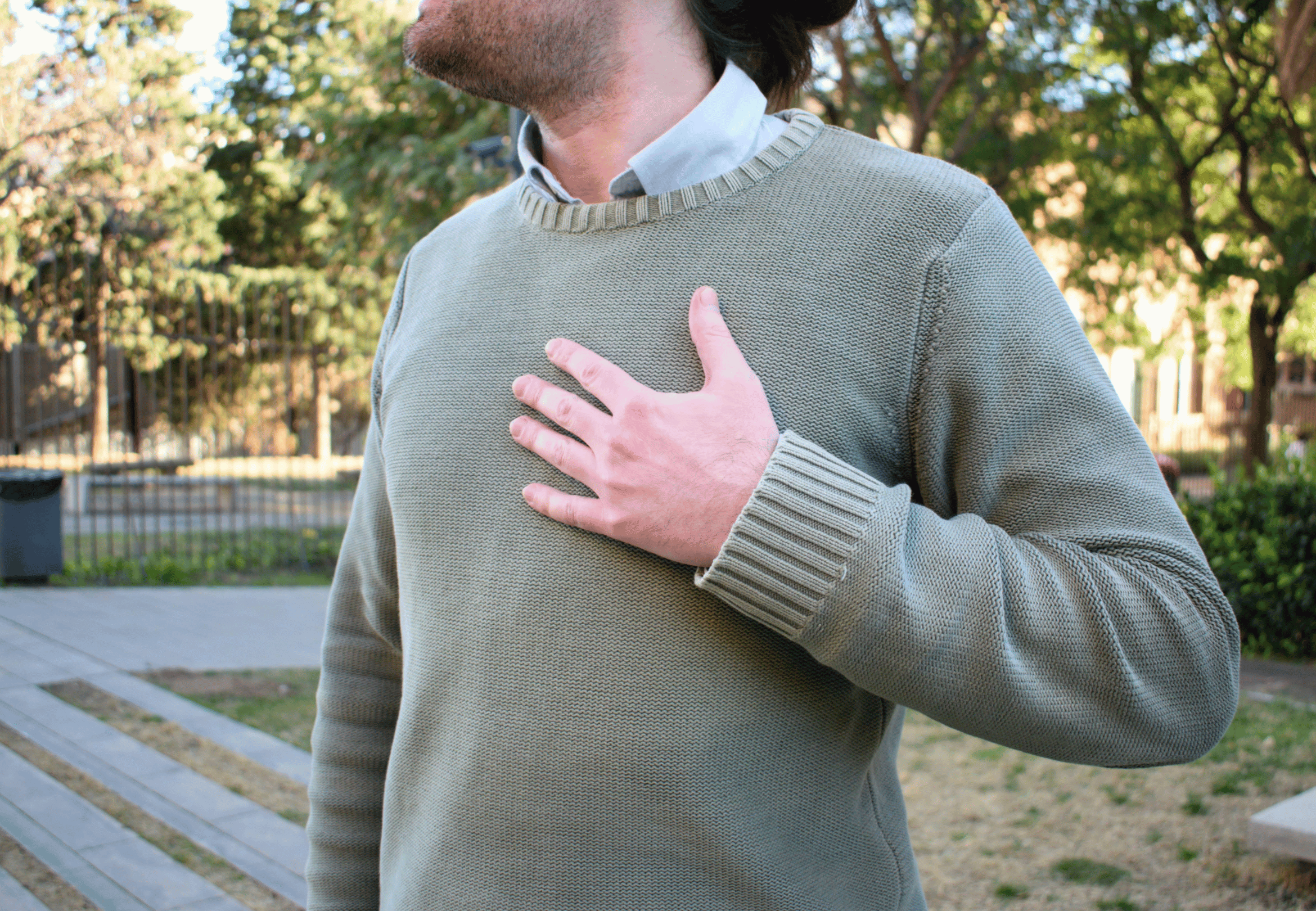“Cardiovascular disease” is a broad term that is linked to heart and blood vessel disorders. Such ailments are often linked to an ongoing build-up of fatty deposits in the arteries until they form what are called atheromatous plaques. If an artery gets clogged, blood cannot deliver oxygen and nutrients. This can lead to a heart attack or stroke.
According to the World Health Organization (WHO), cardiovascular diseases are the leading cause of death worldwide. They claim 17.9 million lives each year and one-third of these deaths involve people under the age of 70.
What are the risk factors for cardiovascular diseases? They can be classified into two types, ‘non-modifiable and ‘modifiable’.
Non Modifiable Factors
Non-modifiable are those factors that we cannot act upon.
-
Age and gender. Cardiovascular diseases indeed tend to affect men more than women under the age of 50. With menopause onset, women do experience an increase in heart disease, and this is due to oestrogen’s protective effect. Therefore, women should follow the same prevention guidelines as men.
- Genetics. People who have a family history of early cardiovascular disease are more likely to suffer from cardiovascular disease.
Modifiable Factors
Modifiable factors are those that we can actively prevent.
-
Cholesterol. This is the fatty substance responsible for 60% of heart disease and 40% of strokes in developed countries. Most cholesterol is produced in the liver, but it is also obtained from foods such as dairy products, red meat, sausages and industrial bakery products, among others. There are two types of cholesterol. LDL or ‘bad’ cholesterol and ‘good‘ or HDL cholesterol. The bad cholesterol can be deposited in the arteries and form atheroma plaques, which are responsible for the clogging of the inner wall of an artery. If they break off, they can cause an embolism. Good cholesterol helps to remove LDL from the arteries.
-
Hypertension. This occurs when blood pressure levels rise over a long period of time. But what is blood pressure? It is the measurement of the force of blood against the walls of the arteries as the heart pumps it through the body. When blood pressure is read, two numbers are given. The first or upper number is called ‘systolic blood pressure‘. The second or lower number is called ‘diastolic blood pressure‘. An example would be 120 over 80 millimetres of mercury (120/80 mmHg) which would correspond to normal blood pressure. People with 130-139/85-89 mmHg levels are at risk of suffering from high blood pressure. Blood pressure may increase if you sleep little and poorly. It has been proven. People who rest for only 6 hours or less suffer more accelerated increases in blood pressure. And if they already have high blood pressure, it can easily get worse.
-
Diabetes. Because cells cannot absorb glucose, glucose levels rise in the blood and urine – this is called hyperglycaemia. Over time, hyperglycaemia damages blood vessels – arteries and veins – and speeds up the process of developing arteriosclerosis. People with diabetes are at risk of developing other problems such as high blood pressure and ‘bad’ LDL cholesterol. According to medical estimates, around 300 million people worldwide suffer from diabetes. The figure could reach 435 million by 2035.
-
Tobacco. According to the World Health Organization, 1.9 million people die each year as a result of tobacco-induced heart disease. These are some of tobacco’s harmful effects:
- It increases blood pressure and aggravates the risk of blood clots.
- It doubles the risk of ischaemic stroke (i.e., reduced blood flow to the brain).
- It reduces the oxygen supply to the body’s tissues.
- It alters blood cell and blood vessel properties. This causes a build-up of cholesterol and other fatty substances.
-
Sedentary lifestyle. According to the US Surgeon General, a person is sedentary when he or she burns less than 150 kilocalories per day on physical activity. If this lack of exercise is prolonged over time, the heart begins to suffer the consequences. For years, it has been said that we have been experiencing a worldwide epidemic of physical inactivity. In some countries, the rate of sedentary lifestyles is as high as 84%. A study presented a few years ago by the University of South Carolina already warned that people who spend more than 10 hours a week driving their car are 64% more likely to suffer from coronary problems.
- Obesity. Increases glucose intolerance, arteriosclerosis, gout and high blood pressure. Depending on how fat is distributed in the body, there is a greater or lesser risk of heart attacks. People with abdominal obesity have a higher cardiovascular risk than those who accumulate fat in the hips, buttocks and thighs.
How to help prevent cardiovascular disease
-
Eating vegetables at any age is good for the heart. Vegetables are good because they contain potassium, which helps to keep blood pressure levels stable. Within the vegetable family, leafy greens such as spinach, cabbage, asparagus, and broccoli are particularly good. When cooking them, they are best steamed or grilled.
-
Omega-3 fatty acids reduce the chance of suffering a heart attack. If you have already suffered a heart attack, taking omega-3 reduces your chances of suffering a second heart attack. It also helps control cholesterol, triglycerides, and blood pressure. As the Omega-3 White Paper states, if the entire population followed the Mediterranean diet, cardiovascular disease incidence would be reduced by almost 70%.
-
Salt. This substance contains chlorine and sodium, chemical elements which contribute to the proper functioning of the body’s cells and heart. To maintain this activity, the body needs precise amounts of sodium outside the cells and potassium inside the cells. This creates a perfect balance, also called ‘homeostasis’. If too much salt is ingested, this process becomes unbalanced, and the organism is disturbed.
-
Train your muscle strength. Doing so will keep your body in an optimal state and make it possible for your heart to stay younger. An article in the journal Nature Reviews Cardiology states this. How is this possible? By lifting weights, skeletal muscles release myokines, molecules that are highly beneficial for the heart.
- Keep an eye on your blood pressure. The cumulative effect of having had high blood pressure for years is more dangerous than having high blood pressure today. Therefore, it is advisable to monitor it from an early age and not to think that heart problems only affect ‘old people’. This has just been proven by Dr. Jing Liu, an expert in cardiovascular disease epidemiology at the Beijing Heart, Lung and Blood Vessel Disease Institute, in a study published in the Chinese Medical Journal.
How can we help you?
At Zenement, we have developed a series of food supplements to help you keep your cholesterol levels and blood pressure stable.
For cholesterol:
-
Red Yeast rice. This is the result of fermenting rice together with Monascus purpureus yeast. It contains ingredients that may help control cholesterol levels. The most important is monacolin K, a statin that is formed naturally as a result of this fermentation. Our solution also contains sterols, isoflavones and monounsaturated fatty acids or ‘healthy fats’.
-
Berbelipid Complex. A complex containing a combination of plant extracts and vitamins that has been shown to be effective for lowering cholesterol. Berberine (from an extract of the Berberis aristata plant), Red Yeast Rice and Policosanol stand out. Our product also contains Thiamine (Vitamin B1) which contributes to good heart function and Astaxanthin, a carotenoid that fights free radicals.
- Omega 3. The omega-3 fatty acids in fish oil have been shown to have great benefits. Among others, it reduces inflammation and improves brain and visual functions. In addition, we have added Vitamin E, which is an antioxidant that protects cells and is essential for a strong immune system and healthy skin and eyes
For blood pressure:
- Pressure complex. Hawthorn fruit contains tannins, polyphenols and flavonoids, natural antioxidant pigments. The garlic bulb has a complex chemical composition with more than 100 different components, which gives it innumerable properties. Among its components are the volatile oils allicin, allin and ajoin. It also contains enzymes, vitamins A, B, C and E, and selenium. Olive leaves have properties that will stimulate your body.


